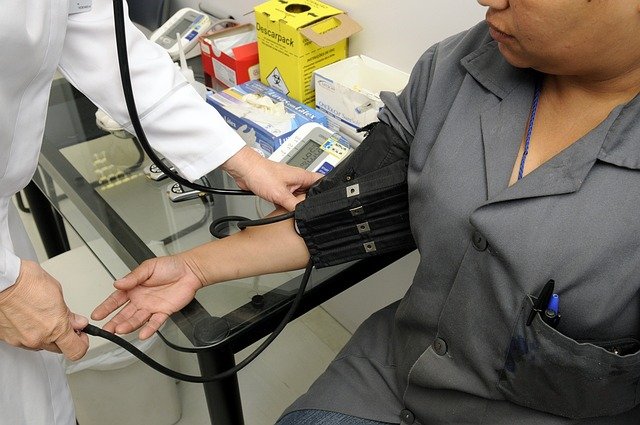Launching Your Career as a Medical Assistant: A Comprehensive Guide to Training
Medical assistant training is a gateway to a rewarding career in healthcare, offering a blend of clinical and administrative skills that are essential in modern medical practices. As the healthcare industry continues to grow, the demand for qualified medical assistants is on the rise, making this an attractive option for those seeking a stable and fulfilling profession.

Most training programs combine classroom instruction with hands-on laboratory experience, ensuring that students are well-prepared for the practical aspects of their future roles. Many programs also include an externship component, allowing students to gain real-world experience in healthcare facilities before graduation.
How Long Does Medical Assistant Training Take?
The duration of medical assistant training can vary depending on the type of program and the credential you’re pursuing. Certificate programs can often be completed in as little as 9 to 12 months, making them an attractive option for those looking to enter the workforce quickly. Associate degree programs, which offer a more comprehensive education, typically take about two years to complete.
When choosing a program, it’s important to consider your long-term career goals and the requirements of potential employers in your area. While certificate programs can lead to entry-level positions, an associate degree may provide more advanced opportunities and a stronger foundation for future career growth.
What Are the Career Prospects for Trained Medical Assistants?
The job outlook for medical assistants is exceptionally positive. According to the U.S. Bureau of Labor Statistics, employment of medical assistants is projected to grow 16% from 2021 to 2031, much faster than the average for all occupations. This growth is driven by an aging population and the increasing need for preventive medical services.
Trained medical assistants can find employment in a variety of healthcare settings, including:
-
Physicians’ offices
-
Hospitals
-
Outpatient care centers
-
Chiropractic clinics
-
Specialty practices
With experience and additional training, medical assistants may also advance to supervisory roles or specialize in areas such as ophthalmology or podiatry.
What Skills Will You Gain Through Medical Assistant Training?
Medical assistant training programs are designed to develop a comprehensive skill set that combines clinical expertise with administrative proficiency. Some of the key skills you can expect to acquire include:
-
Clinical skills: Taking vital signs, administering injections, assisting with minor procedures, and performing basic laboratory tests.
-
Administrative skills: Scheduling appointments, maintaining medical records, and managing billing and insurance claims.
-
Patient care: Communicating effectively with patients, providing education on treatments and medications, and ensuring patient comfort and safety.
-
Technical proficiency: Operating medical equipment and using electronic health record systems.
-
Ethical and legal understanding: Adhering to healthcare regulations and maintaining patient confidentiality.
These skills make medical assistants valuable team members in any healthcare setting, capable of supporting both clinical and administrative functions.
How to Choose the Right Medical Assistant Training Program?
Selecting the right training program is crucial for your future success as a medical assistant. Here are some factors to consider when evaluating programs:
-
Accreditation: Ensure the program is accredited by recognized organizations such as the Commission on Accreditation of Allied Health Education Programs (CAAHEP) or the Accrediting Bureau of Health Education Schools (ABHES).
-
Curriculum: Look for a comprehensive curriculum that covers both clinical and administrative aspects of the role.
-
Hands-on experience: Programs that offer laboratory practice and externship opportunities provide valuable practical experience.
-
Certification preparation: Choose a program that prepares you for certification exams, such as the Certified Medical Assistant (CMA) exam.
-
Job placement assistance: Some programs offer career services to help graduates find employment after completion.
What Are the Costs Associated with Medical Assistant Training?
The cost of medical assistant training can vary significantly depending on the type of program and the institution offering it. Here’s a general overview of what you might expect:
| Program Type | Provider Type | Cost Estimation |
|---|---|---|
| Certificate Program | Community College | $2,500 - $10,000 |
| Certificate Program | Vocational School | $6,000 - $15,000 |
| Associate Degree | Community College | $10,000 - $25,000 |
| Associate Degree | Private College | $20,000 - $40,000 |
Prices, rates, or cost estimates mentioned in this article are based on the latest available information but may change over time. Independent research is advised before making financial decisions.
It’s important to note that these costs typically include tuition, fees, and sometimes books and supplies. Additional expenses such as certification exam fees and living expenses should also be factored into your budget. Many students find financial aid options, including scholarships, grants, and loans, to help offset the costs of their education.
Medical assistant training offers a pathway to a dynamic and growing career in healthcare. With the right education and skills, you can become an integral part of the medical team, making a difference in patients’ lives while enjoying a stable and rewarding profession. As you consider this career path, take the time to research programs thoroughly and choose one that aligns with your goals and circumstances. With dedication and the proper training, you’ll be well-positioned to launch a successful career as a medical assistant.






